The Future(s) of Indigenous Horror: Moon of the Crusted Snow
In this chapter, we will explore approaches to the topic of Indigenous horror as it applies to Anishinaabe writer Waubgeshig Rice’s apocalyptic horror novel Moon of the Crusted Snow. This introduction provides context for the novel by discussing its place within recent trends in genre studies and Indigenous literary studies. In the following sections, we will consider a handful of critical approaches to help guide our reading of the novel before turning to an analysis of key sections from the text itself.
An Introduction to the Short Story in Canada: Reading Alice Munro’s Who Do You Think You Are?
This chapter introduces the short story as a literary genre, and discusses the short story cycle as a particularly important genre in Canada. It offers some suggestions for analyzing short stories from print culture and feminist perspectives, and it turns to Alice Munro’s 1978 short story cycle Who Do You Think You Are? as a case study in putting these perspectives to work.
Literary Censorship and Controversy in Canada
This chapter introduces you to literary censorship in Canada, looking both at positions taken by Canadian scholars on the practice of censorship and its effects, as well as at specific examples. We will analyze controversies around three texts to better see how the censorship of Canadian literature works in practice: Timothy Findley’s The Wars (1977) and Beatrice Culleton Mosionier’s In Search of April Raintree (1983) provide examples of censorship where the authors themselves were involved in contesting or responding directly to critics in their texts; Raziel Reid’s When Everything Feels Like the Movies (2014) provides an example of a contemporary attempt to strip a novel of its literary award on the basis of its allegedly controversial content.
Official Multiculturalism’s Funding of Canadian Literature: The Writing and Publications Program
In this chapter, we will explore how “official multiculturalism”—that is, multiculturalism as a federal government policy in Canada—has influenced the writing and publishing of Canadian literature. While you have likely already thought about multiculturalism as part of the social context within which Canadian literature circulates, or about which Canadian authors write, official multiculturalism has also supported the production of Canadian literature itself. This chapter will introduce you to the history of the Writing and Publications Program (WPP), through which Canada’s federal multiculturalism directorate provided funding for literature from the 1970s-1990s.
Marie Clements’ Burning Vision
The play Burning Vision, by Métis Dene playwright and filmmaker Marie Clements, is an extraordinary exploration of interconnectedness across diverse histories, cultures, languages, and places. The play traces several intertwined historical trajectories, but the more familiar historical event it narrates is how the atomic bombs that were dropped by the United States on Nagasaki and Hiroshima during World War II were made from uranium mined from the lands of the Sahtu Dene First Nation near Port Radium, Northwest Territories. Although this event indelibly and permanently connected these two places in terms of trauma, disease, and environmental poisoning, it also later generated more positive relations of responsibility, accountability, and mutual recognition.
The Periodical Press: Newspapers, Magazines, and Literary Culture in Early Canada
The book tends to get a great deal of focus in contemporary Canadian literary culture: literary awards, national reading programs such as Canada Reads, university courses, even, tend to place the book at the centre. And yet, in the nineteenth century, it was the periodical press—magazines and newspapers—that drove Canada’s cultural life. This chapter, using the writing career of Isabella Valancy Crawford as a case study, explores the importance to readers and writers alike of periodical publishing in early Canada, and the profound role it played in shaping a national literary culture at that time.
Listening to Canada: The Weakerthans’ “One Great City!”
This chapter considers the roles of locality and identity in John K. Samson’s song lyrics, particularly through Samson’s evocations of the people, landmarks, and history of Winnipeg, Manitoba in “One Great City!” Locality means the particular place or position of something, and is related to the idea of the “local,” which connotes a specialized knowledge about a certain place or community by virtue of being part of it. Samson, a lifelong Winnipeg resident frequently termed “the poet laureate of Winnipeg rock” (Sorensen), has often made the city his unlikely muse, saying, “I think of Winnipeg as my subject . . . that I’m always trying to get right. . . . Even if I leave, I’ll always be writing about this place” (qtd. in Chong 77).
Monkey Beach by Eden Robinson
Haisla/Heiltsuk writer Eden Robinson’s first book, a collection of stories called Traplines, was published to critical acclaim in 1996. Robinson then adapted one story from the collection, Queen of the North, into her debut novel, Monkey Beach, which was shortlisted for the 2000 Governor General’s Award and the Giller Prize, and won the Ethel Wilson Fiction Prize.
Green Grass, Running Water by Thomas King
Thomas King’s storytelling, publications, and talks play a significant role in developing Indigenous literatures in Canada and the United States. Green Grass, Running Water, a finalist for the 1993 Governor General’s Award, remains one of his most popular works.
A Strange Manuscript Found in a Copper Cylinder by James De Mille
Published posthumously in 1888, James De Mille’s A Strange Manuscript Found in a Copper Cylinder tells a satiric story of a lost utopia through a frame narrative and an internal tale ostensibly found in a bottle floating at sea. The questions in this case study guide students through the frame narrative structure, as well as the use of irony and problematic depictions of utopia.








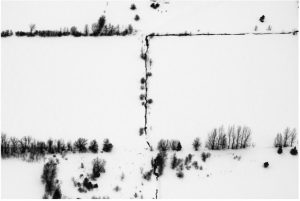



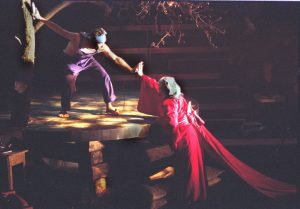
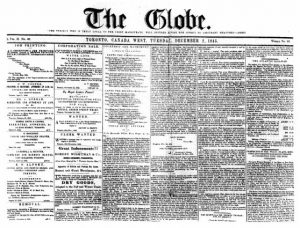

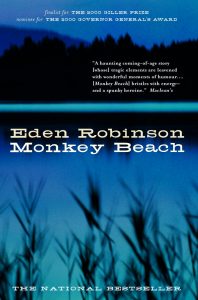
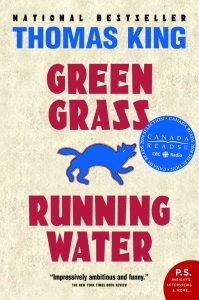
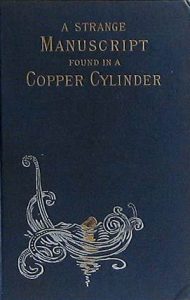
 ©
©